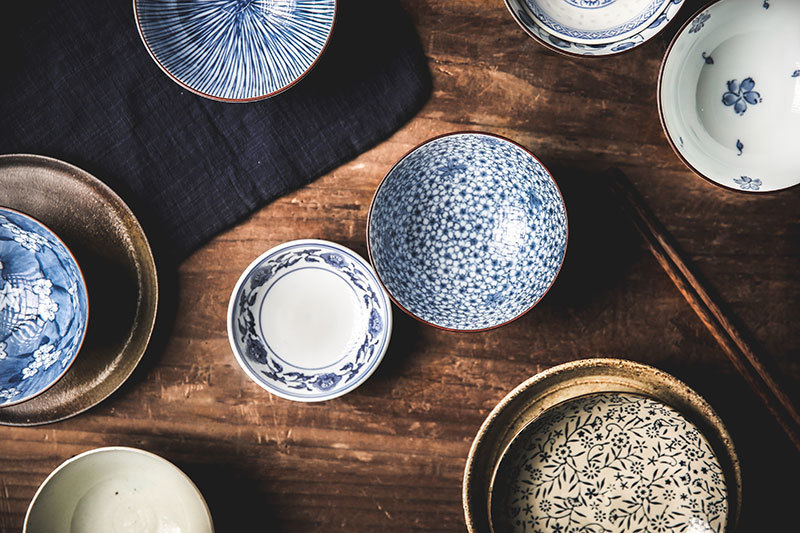13
2020
-
12
Common problems and analysis of black gold flower pigment for full polished glaze

In recent years, the popularity of fully polished glazes has significantly increased the demand for black pigments for glazes (especially for black gold flower products), and higher requirements for the temperature resistance and color purity of the pigments. During daily use, ceramic manufacturers will find that the black pigments provided by different ceramic color and glaze companies are very different, and there are common quality problems with pinholes. Such problems are mainly determined by the colorant formula and production process.
The ceramic glaze is divided in structure with black pigments and should belong to the spinel series. Because it contains different elements, different spinels can have different colors. For example, magnesium spinel is red, blue, green, brown or colorless; zinc spinel is dark green; iron spinel is Black and so on.
Ceramic black pigment should belong to composite spinel combination color. The spinel structure is hard glass-like octahedrons or granules and blocks. Natural spinel in nature appears in igneous rock, granite pegmatite and metamorphic limestone. Some transparent and beautiful spinel can be used as gems , Some as iron-containing magnetic materials. More than 200 varieties of spinel have been produced by artificial methods. As a ceramic pigment with a spinel structure, high temperature stability and chemical stability are very prominent and obvious. The brown and grass green that we commonly use belong to this type of structure. However, there are certain differences in the dissolution rate of the components in the ceramic pigment formulations in different basic glazes. For example, the basic glaze containing zirconia also contains praseodymium yellow and zirconium iron red. The hair color will be significantly better than other color products without zirconium. Similarly, in the basic glaze containing high zinc, the hair color of the golden and dark brown products of the iron series will be relatively better.
For the brilliant black and cobalt black series of ceramic black products, the common ingredients such as zinc oxide and zirconium oxide in the base glaze are not conducive to black color development. Both zinc oxide and zirconium oxide have the effect of opacifier and the effect of promoting crystallization. Therefore, in production, if the firing temperature of the glaze is high or the zirconium content is high, the black products for glaze may be crystallized on the glaze surface or the color development may be significantly reduced. A common problem in production is that the cobalt black product glaze crystallizes in the zirconium white glaze and the cobalt blue color point appears, especially during the use of the cobalt black product, the higher the content of cobalt oxide and zirconia in the glaze, the higher the glaze The more cobalt blue dots appear in the crystal. In addition, in high-temperature glazes containing zinc oxide or zirconium oxide, brilliant black products are prone to browning. As the firing temperature of the glaze increases, the tendency of reddish-brown tones will be more obvious.
A ceramic enterprise technician once told the author that the black glaze products produced by Foshan ceramic color and glaze enterprises are not resistant to high temperatures, especially when the calcination temperature exceeds 1250 ℃ in daily-use porcelain, it is easy to crystallize the glaze surface . Generally speaking, it is more common for brilliant black products to have this situation. It can also be seen from the formula of brilliant black products that the cooling effect of manganese oxide is very obvious, and the amount of manganese oxide content in the pigment formula is directly related To the high temperature stability of black in glaze. In fully polished glaze products, excessive manganese oxide content is directly related to the appearance of pinholes. In addition, the cobalt oxide used in the black of inkjet colorants is directly related to the temperature-intolerance foaming and the increase of conductivity.
To paraphrase an old saying in shopping malls, "you get what you pay for," the performance indicators of the main raw materials in color materials are directly related to the final quality of the product. Perhaps the use of inferior raw materials can achieve normal performance indicators under certain conditions (such as using recycled cobalt oxide to replace industrial-grade cobalt oxide to produce black pigments). Although it can significantly reduce costs, under more stringent testing conditions, unqualified raw materials It can be distinguished from high-quality raw materials. Especially for brand companies, they must ensure the quality of the raw materials of their products.
Related News


